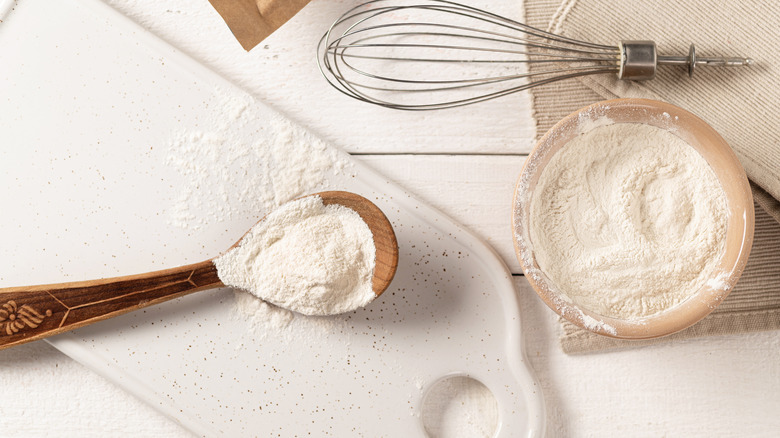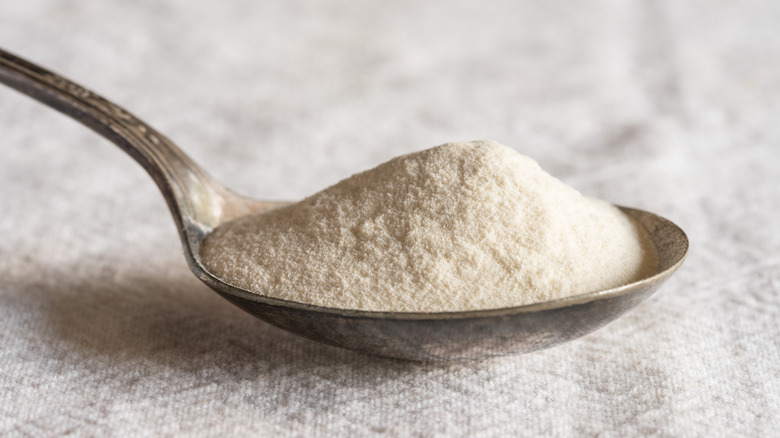Why You Should Start Keeping Xanthan Gum In Your Pantry
The world of gluten-free cooking can often seem bland, boring, and intimidating. A few pantry essentials and a handful of tricks, though, can make it a lot less terrifying and a whole lot more flavorful. Jamie Oliver's blog, for example, suggests keeping gluten-free oats, breads, rice, and quinoa in your pantry at all times, and says that Asian and Mexican cuisines — with a few tweaks — can easily be adapted to a gluten-free diet, as well.
Baking, however, is where things get a touch tougher. The lack of gluten means that baked goods are infamous for lacking that signature bouncy texture, but again, it's nothing a handy little ingredient can't handle. According to King Arthur Baking, working with a regular recipe and simply swapping the flour with a gluten-free alternative is rarely enough. My Recipes even adds that gluten-free bakes without additional additives, like xanthan gum, would be incredibly crumby. Adding an additive like xanthan gum to the mix helps the dough bind as it would if there was actual gluten in it, and helps recreate the texture of gluten. Essentially, xanthan gum helps mimic the properties of gluten without, gluten at all, and so, can be a savior when it comes to gluten-free cooking!
What is xanthan gum and how can you use it?
A fermented additive made from the "Xanthomonas campestris" bacteria, xanthan gum is most often found in a powdered form, according to The Spruce Eats. Once the powder is mixed with water, it forms a gel-like consistency, which can then be added to all sorts of foods. In addition to helping doughs and batters bind and develop the elasticity gluten normally provides, xanthan gum can be used as a stabilizing ingredient in all sorts of things. According to Zac Bird, a vegan chef from Australia, xanthan gum can even be used to stabilize ice cream, as well as help thicken a roux or a sauce in a jiffy, according to MSN.
Once you're ready to use xanthan gum in your baking, King Arthur Baking recommends first checking the ingredient list of the gluten-free flour mix if you're using one. These often already come with the additive in them, but if they don't, the site suggests adding only a tiny amount of xanthan gum in your recipe: a quarter of a teaspoon for each cup of flour. If you need a dough that is more or less elastic, you can always increase or decrease the amount of xanthan gum. As long as you're not adding more than a tablespoon or so — in which case, the end result can be too gummy — you will be on your way to making stellar gluten-free bakes without compromising on the stretchy texture!

